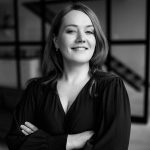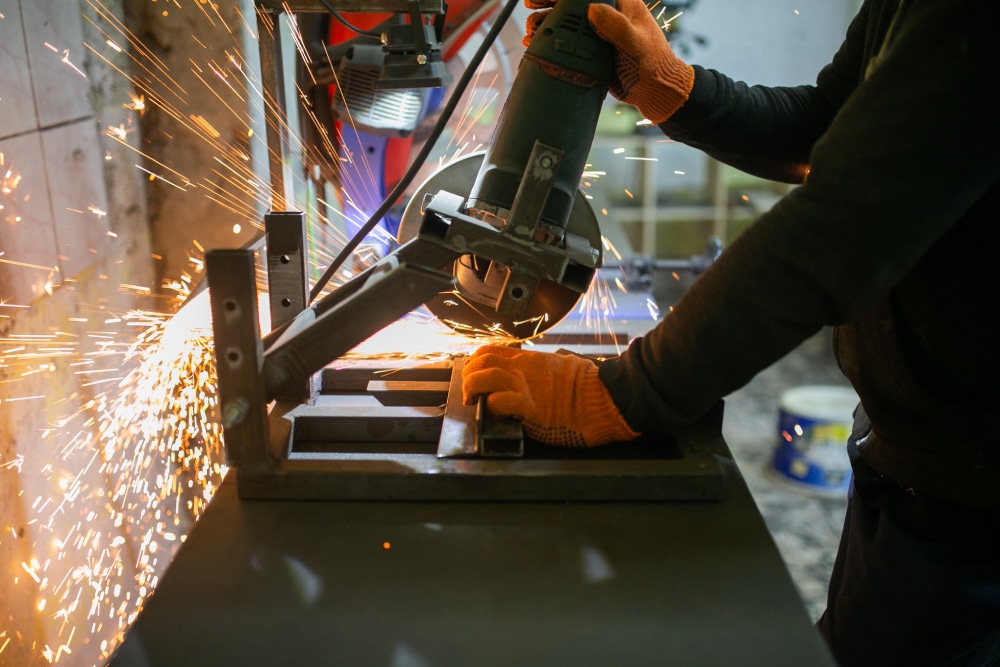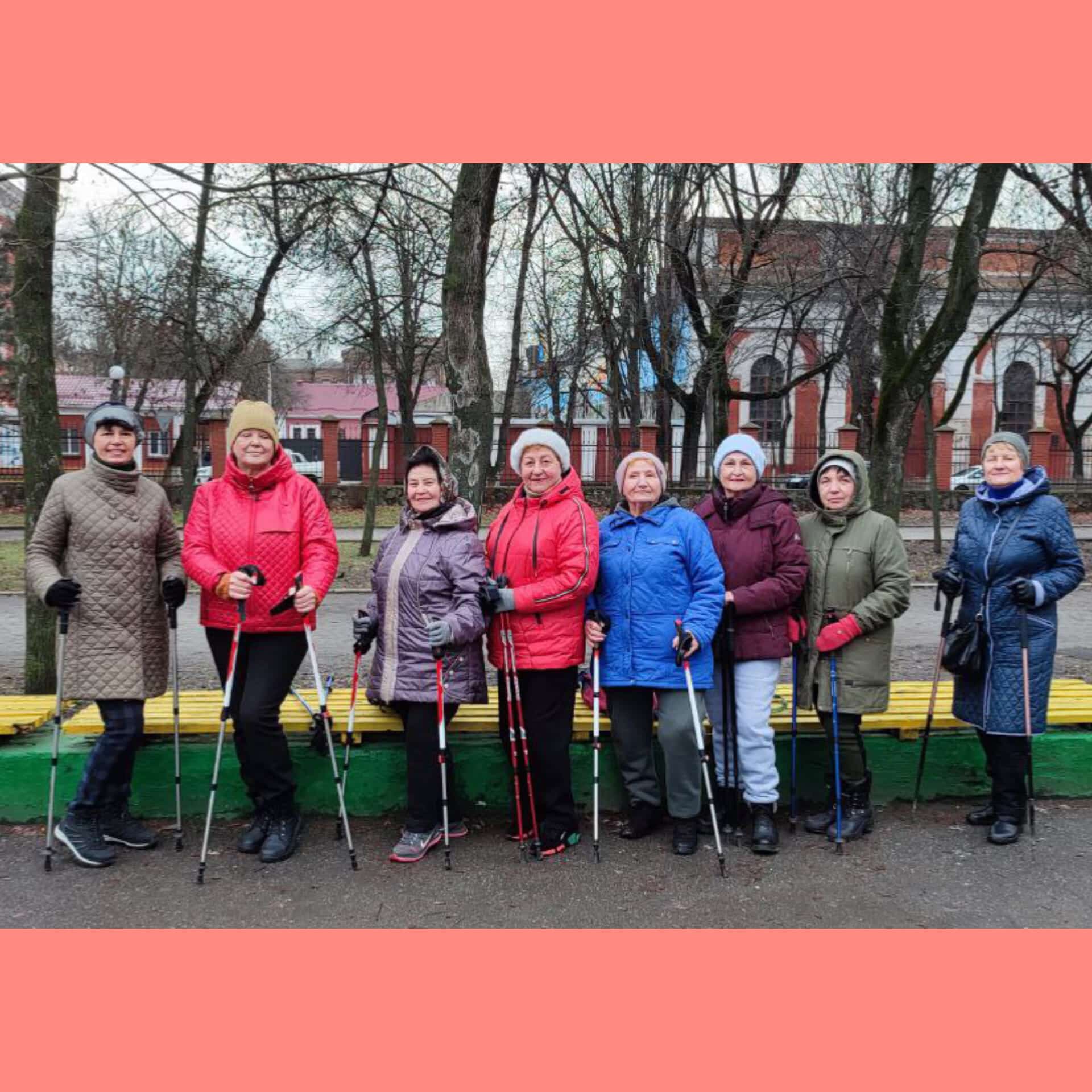A much anticipated presentation of a multimedia project ’Ukrainian constructivism’ took place on November, 15, with the involvement of a team of researchers, musicians and artists from Ukraine and Denmark. Here’s more about the project, why it is of importance and where you can see it.
There has always been much tension around the issue of preservation of cultural heritage in Ukraine. However, this matter has lately been brought up on the media landscape not without a fortuitous situational communication. For example, a team of the restaurant chain put up green metal hoarding fences around their restaurants in order to demonstrate that there are much scarier things than witches and ghosts. One of them is the destruction of historical buildings.
The most recent innovation project that draws attention to the importance of preservation of cultural heritage is undoubtedly the multimedia show ‘Ukrainian constructivism’ organized with the support of the Ukrainian Cultural Foundation.
The team that organized the show comprises famous figures from different fields, such as Evheniya Hubkina and Yaroslav Perekhod’ko, researchers of architecture who wrote a libretto for a modern opera, Ukrainian musicians ONUKA and Maneken, who composed music. The digital decorations for the show were created by a Kharkiv-born Danish-Ukrainian artist Serhiy Sviatchenko. Sebastian Kloborg, who is famous for his collaboration with the Royal Danish Theatre, did choreography.
It is ONUKA who gave voice to the architect Lotte Stam-Beese. Lotte was one of the first women of the Bauhaus art school who studied architecture. In 1932-1933 she visited Kharkiv to join a team that was building a famous social city of the Kharkiv Tractor Plant. Afterwards Lotte moved to the Netherlands where she became a real celebrity thanks to her involvement in the work on the post-war reconstruction of Rotterdam.
We talked about the project and its objectives with one of its co-creators and the co-founder of the public organization Urban Forms Center and the movement ‘Female Modernists’, Evheniya Hubkina.
Why did a female architect take central stage in your project?
First, because we do not know much about female architects. Despite the number of the projects that have recently been implemented, we are still in search of female stories and we do our best trying to highlight their experience in different professions. Unfortunately, the percentage of famous female stories compared with that of men remains unjust.
It appears that there are tangible results of female work, however, we are still not in the know about its authors.
I find this unfair, since the architecture of the 20th century was the period of emancipation. There were a great many female architects. One would think that we face no obstacles while finding such information. However, there’s way less information about them than necessary. I personally consider it my mission to give voice to a woman whenever I can. Even if this person is long deceased (like Lotte), I will still insist on providing her with a microphone and letting her speak. In our multimedia show, Lotte will speak through ONUKA. She’s going to be in the spotlight of the show.
Why is it exactly Lotte Stam-Beese whom you chose for the show? This figure is hardly known in Ukraine.
We chose her because of my personal affection for Lotte. Her story is very interesting. Drawing on her example one can show complex historical processes and the processes that were taking place in the world of architecture back then.
I learned about her from a presentation delivered by Ivan Nevzhodin from the Delft University of Technology about 10 years ago at a conference. I made a mental note of her story but I failed to commit her name to memory. A story of a female Bauhaus student that lived in Kharkiv struck a chord with me. I thought to myself, ‘Why do I know nothing about her?’ With the passage of time I shared Lotte’s story with Dmytro Zadorin at a colloquium in Zaporizhzhya. Dmytro is now doing his PhD at the University of Edinburgh. He said that there was a celebrity in Dutch architecture named Lotte Stam-Beese but that he knew next to nothing about her life in Kharkiv. He said it was highly unlikely that it was the same Lotte.
After a while Hanneke Osterhof, a researcher of the architect’s biography, visited Kharkiv. I was helping her to find information about Lotte’s stay in Kharkiv in archives. Thanks to Ms. Osterhof’s work I managed to discover a continuous connection of Lotte’s four life periods that she spent in Germany, the Czech Republic, Kharkiv and the Netherlands.
Yaroslav Perekhod’ko, who co-wrote the script, and I decided to focus on a particular period in Lotte’s life, the one that she spent in Kharkiv. That was the time when this young modernist crossed paths with Ukraine. The time was hard for both of them. Lotte was going through a crisis period in her personal life, career and political beliefs. She was coming of age and starting to grasp the reality that in hindsight proved much more difficult than she could have imagined while taking a trip to the country of ‘victorious socialism’.
For Ukraine as well as for the architecture of constructivism this was also a watermark moment of hideous historical events that saw the succession of economic policies, Stalinist repressions and Holodomor (a famine organized by Joseph Stalin in Soviet Ukraine from 1932 to 1933 that killed millions of Ukrainians – editor’s note). The ‘beginning of the end’ of constructivism coincided with the aforementioned events. It was succeeded by social realism.
Lotte had witnessed Holodomor and she spoke about it in the interviews that she gave in the 1980s.
How did the modern electronic musicians join the project? How did you manage to establish ‘bonds of friendship’ between electronic music and science?
I have known Nataliia Zhyzhchenko (ONUKA) since our organization Urban Forms Centre was collaborating in 2016 with the Center for Urban History in Lviv and the Local city council of Slavutych on a scientific summer school ‘The idea of a city: a reality check’. The school was attended by professors and students from across the world. It was a large team of scientists who wanted to conduct research on Slavutych. Yevhen Zakharchenko (a citizen of Slavutych), who is a friend of mine, was acquainted with Nataliia at that time. Yevhen suggested inviting her to a conference and she accepted the offer.
In her public talk Nataliia gave an interesting account of her culturological research when she was a student and of how she got into Chornobyl research. She also told a few personal stories. At the end of the conference ONUKA gave a short performance on the roof of the cinematic hall in Slavutych for all the townspeople. Students and tutors of the school.
It was our first experience of how art, electronic music and science may be combined.
After the concert and public talk came to an end, a professor from the USA named Kate Brown (she is the author of the book ‘Plutopia’) came up to me and said, ‘You do everything right’.
I then asked myself – why can’t science be like that? In science you can do things not only strictly according to protocol. You may also mix it with different other formats. I have been cherishing this dream for many years and it has come true within the framework of the cross-sectoral show ‘Ukrainian constructivism’.
How did Serhiy Sviatchenko join the project?
He has been involved in it from the very beginning. I met Serhiy Sviatchenko while I was working on the project ‘Encyclopedia of Ukrainian Architecture‘, which, by the way, was financially supported by the Zagoriy Foundation. His work was to be featured in the material dedicated to Sviatchenko’s teacher, Antonov, who was a renowned city planner of the 1960s.
While working on this project Serhiy learned about my having been researching constructivism for many years. He also learned that among other things I was researching the social city ‘New Kharkiv’ built around the Kharkiv Tractor Plant. It was that plant that Lotte Stam-Beese worked on together with a group of male and female city planners.
He said he was interested in doing a project together about Ukrainian constructivism as there were numerous books available on the Russian one, with very few dedicated to its Ukrainian counterpart.
We will bring out the book later. However, we decided to do something more experimental and dazzling first, not scientific stuff and not something related to popular science. We wanted to create a show that would combine various genres. Thus, we commenced working on the project ‘Ukrainian constructivism’.
It is as interactive a project as it can be. It is innovative as well. Anyone can see it right in their smartphones. First, it is important to keep safe during the pandemic. Second, in doing so we make art available, since anyone can watch the show on the website free of charge. Why did we go for such a format?
We thought that it is exactly the interpretation of architecture by artists that will manage to put a message across to a wider audience. Not only will the architectural styles and strokes seem more comprehensible, such an interpretation will also demonstrate how one can rethink certain historical events.
The artists in general allow major historical events to pass through themselves in order to better comprehend them. As scientists we always see and feel things differently from the way the artists do. This is why we can find a new methodology for learning new themes through this synthesis of science and art.
I would even recommend other scientists to cooperate with artists since we live in our own ‘bubble’ following the paths that have already been trodden by others. At times, in order to see more one would take entirely different viewpoints and practices into consideration. I hope our experiment will work out well since it is very interesting to deploy various forms of art while talking modern languages on the topic whose object of study is chosen by scientists and is interpreted and rationalized by artists.
You can watch the show on the project’s website. It is free.








